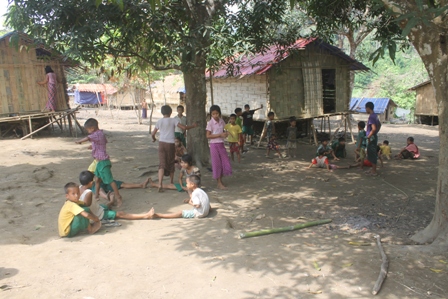About 700 buildings evacuated in Hakha after landslides Featured
Friday, 31 July 2015 16:28 Written by Chinland Guardian Published in Chin News 31 July 2015 — About 1,000 families have evacuated their houses in Hakha, Chin State as flash floods and landslides continue following continuous heavy rains. It is estimated that about 7,00 buildings, including government offices, schools and private houses, have been left empty

